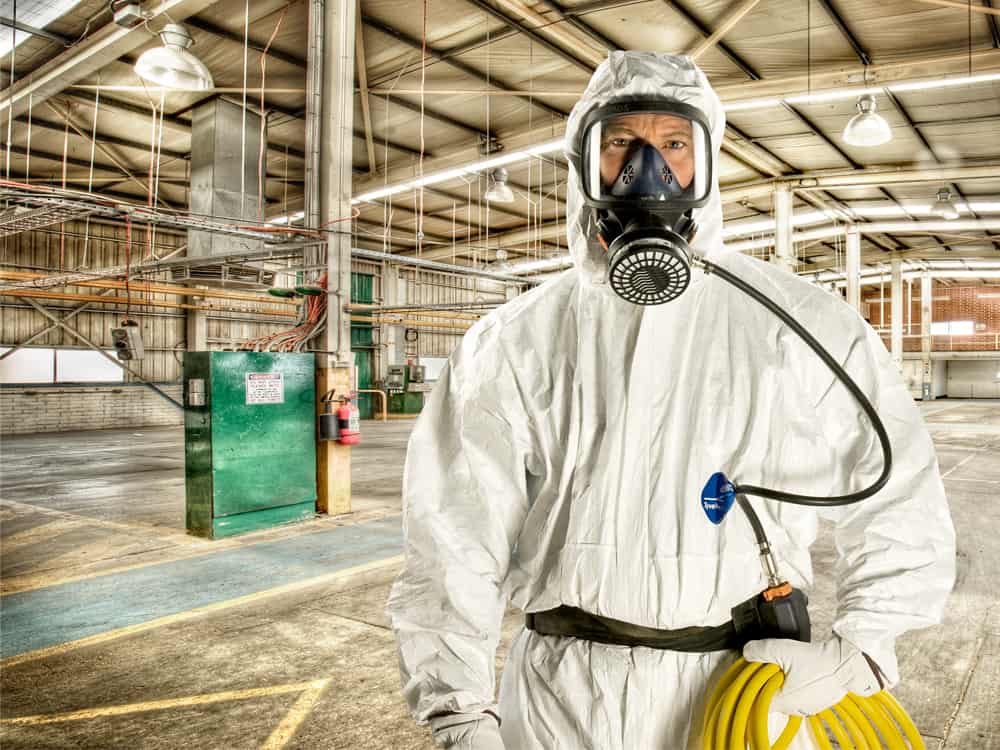The Complete Process of Accredited Asbestos Checking to Make Certain Residential Property Conformity
In the world of residential property monitoring and conformity, the process of certified asbestos testing stands as an essential component to ensure the safety and security and well-being of owners. From the preliminary assessment to the last interpretation of outcomes, each phase plays a crucial function in determining the presence of asbestos within a residential or commercial property.
Accredited Asbestos Testing: First Evaluation
In carrying out the initial analysis for approved asbestos testing, a meticulous exam of the residential property's materials is critical to precisely recognize possible asbestos-containing products. This essential action includes visually checking all areas of the property, consisting of ceilings, walls, floor covering, insulation, and other structure materials that might harbor asbestos. Unique interest is offered to materials that are vulnerable to harm or disturbance, as these scenarios can launch harmful asbestos fibers into the air. In addition, tasting of thought products may be essential to validate the presence of asbestos via lab analysis.
Certified asbestos assessors comply with rigorous procedures established by regulatory bodies to ensure the accuracy and dependability of the testing process. By thoroughly documenting findings and using innovative screening methods, assessors can provide homeowner with a comprehensive report detailing the presence of asbestos, if any kind of, and the suggested steps for mitigation or removal. This initial assessment sets the foundation for subsequent actions to address asbestos concerns and ensure the safety and compliance of the residential or commercial property.
Sample Collection Procedures for Asbestos Testing
Reliable sample collection procedures are essential in ensuring exact asbestos testing results and conformity with regulative standards. When accumulating examples for asbestos testing, it is crucial to adhere to stringent protocols to decrease the danger of contamination and guarantee the integrity of the outcomes.
Firstly, it is essential to recognize the thought asbestos-containing products (ACMs) and prioritize tasting areas based on aspects such as the material's problem, ease of access, and possibility for disturbance. Asbestos Testing. Examples must be collected from different locations within the building to provide an extensive analysis of asbestos visibility
During sample collection, accredited professionals must put on suitable individual protective devices (PPE) to safeguard against asbestos direct exposure. They should make use of clean devices, such as disposable gloves and plastic bed linen, to avoid cross-contamination in between examples. Samples must be carefully gathered making use of a defined technique, such as damp cleaning or coring, and securely sealed in closed containers to maintain their integrity during transport to the research laboratory for analysis.
Lab Evaluation Refine for Asbestos Examples
Upon conclusion of the sample collection process, the asbestos examples are carefully transported to approved laboratories for meticulous evaluation. The very first step in the laboratory analysis procedure is sample preparation, where the collected examples are thoroughly refined to draw out the asbestos fibers.

Once the evaluation is total, a comprehensive report is produced, laying out the findings and verifying whether asbestos is existing, the sort of asbestos fibers identified, and the focus levels. This details is vital for residential property owners to take the necessary actions to guarantee conformity with asbestos guidelines and safeguard the wellness of residents.

Reporting and Analysis of Asbestos Test Outcomes
Certified asbestos screening research laboratories offer in-depth records that supply essential insights into the existence, kind, and concentration degrees of asbestos fibers discovered in examples gathered from properties. These records are important for homeowner and supervisors to recognize the threat postured by asbestos and make informed choices regarding its administration or elimination. The reports normally include info on the Our site methods utilized for screening, the locations from which examples were taken, the kind of asbestos identified (such as chrysotile, amosite, or crocidolite), and the focus degrees of asbestos fibers discovered.
Analyzing these results needs expertise to examine the possible health dangers related to asbestos exposure, identify the proper training course of action, and guarantee governing conformity (Asbestos Testing). Depending on the findings, suggestions might vary from proceeded monitoring and maintenance to encapsulation or total asbestos abatement. Homeowner should meticulously examine these reports and speak with asbestos experts to develop a detailed prepare for resolving any asbestos issues identified
Guaranteeing Home Conformity With Asbestos Laws
To preserve adherence with asbestos guidelines, residential property proprietors have to faithfully apply actions to make certain conformity with relevant regulations and standards. This consists try here of carrying out routine asbestos evaluations by accredited professionals to recognize any type of visibility of asbestos-containing materials within the building. Once asbestos is recognized, homeowner must comply with asbestos management prepares that outline appropriate control, removal, or encapsulation procedures to protect against exposure and spread of asbestos fibers. Compliance additionally involves maintaining thorough records of asbestos testing, upkeep, and removal tasks for evaluation purposes.
Residential or commercial property proprietors must give asbestos awareness training to staff members and occupants to minimize the danger of asbestos exposure and guarantee appropriate handling of materials that may include asbestos. Additionally, it is essential to stay notified concerning any kind of updates or modifications in asbestos policies to readjust management techniques as necessary. By proactively dealing with asbestos compliance demands, homeowner can develop a risk-free environment for residents and minimize potential legal and health dangers linked with asbestos exposure.
Final Thought
To conclude, accredited asbestos screening is an essential procedure for making sure property conformity with policies. The first analysis, sample collection procedures, laboratory analysis, and interpretation of outcomes are very important action in this process. By following these procedures, residential or commercial property owners can identify and deal with any asbestos dangers present, securing the health and wellness of residents and maintaining conformity with governing needs.